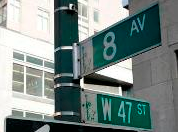
People will do crazy things to get their hands on a rent controlled apartment, from pretending to be someone’s relative to pretending their dead relative that owned the home is in fact, still alive and kicking. A book by Robert Fogelson entitled The Great Rent Wars: New York 1917-1929, explains the tumultuous story of the many attempts to fix a terrible housing situation before rent control. Enacted 70 years ago, the story of rent regulations started with a government that could care less about the issues happening with housing.
Through the late teens, the matter was paid no mind by most. A bill originated by assemblyman Charles B. Garfinkel would have prevented landlords from raising rent for a year after a tenant moved in up until May 1919. If they wanted to raise it after that month, 30 day notice for the renters was required, which was unheard of in a time where rents were being raised 100% with absolutely no notice. Unfortunately, the bill didn’t even make it past its first round.
Rent profiteering was not only a New York City issue, but an international problem. Other countries had dealt with the problem by instating rent regulation, and Americans urged their leaders to follow suit, lead by The American Federation of Labor and The Greater New York Tenants League. At this time, America was faced with a severe housing shortage due to World War 1, and they thought this could be an answer to that problem. Those who served in the military and their dependants were already protected by greedy landlords through rent regulation, so why not make it widespread?
Still, legislators did not feel like it was big enough of an issue to care about. Those in office were convinced that everything was going to sort itself out when the war ended. Their beliefs were proved wrong when inflation in general became much worse as the war ended, including for renters.
Fighting between renters, landlords, and various American governments carried on for years. Finally, relief was felt in 1942 when Franklin D. Roosevelt passed the Emergency Price Control Act, which, as the name states, controlled prices of all things except agricultural products, rent included.
In 1943, the Office of Price Administration froze New York rents at their March 1st, 1943 levels. When the Emergency Price Control Act expired four years later, congress passed the Federal Housing and Rent Act of 1947. It allowed homes built after February of 1947 to be free of regulation.
Housing shortages plagued the nation yet again in the fifties, and for the first time the deregulation of homes occured. In every state besides New York, rent controlled homes were few and far between as compared to the past. Only the most expensive luxury rental in NYC were exempted from regulation, but the rest were still secure.
More recent major changes affecting those lucky enough to live in a rent controlled apartment happened in 2011. The New York legislature passed the Rent Act of 2011, putting more limitations on the homes. It limited vacancy increases to one year, reduced the permanent rent increase of buildings of 35 or more units for apartment improvements, increased the minimum rent for deregulation to $2,500, and increased the household income to $200,000 for deregulating an occupied apartment whose rent is at least $2,500.
Is rent control a good thing or a bad thing? Affordable housing isn’t as affordable as one would think, and city rents keep rising, pushing people out of New York. One thing that can be agreed on is that the effects of regulation are widespread. With a very long history of back and forth arguing about it, the debate might go on forever.





